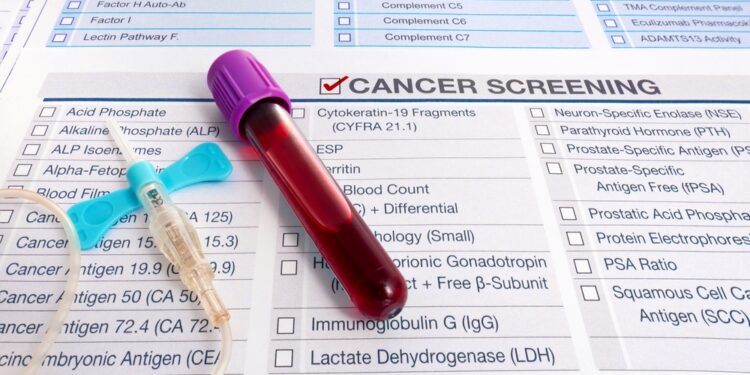SPONSORED COPY
Cancer can be a life-altering experience for most individuals, impacting both their personal and professional lives and presenting numerous challenges along the way. Currently, there are over 890,000 people of working age (16 to 65) living with cancer in the UK, and this figure is expected to increase by 29% (to 1,150,000) by 2030. Recognising possible cancer symptoms and going to screening appointments can be lifesaving.
What are targeted cancer screenings
Targeted cancer screenings are ways to look for signs of cancer before any symptoms appear. As we get older, our risk of developing cancer increases. That’s why it’s important to check for cancer regularly to catch any potential issues early on.
Although there are ways to check for some cancers at home, during a targeted cancer screening a doctor might perform a physical examination to look for early signs of cancer.
Remember, a physical exam should only be done with consent, and members can bring someone with them to the appointment for support. If members feel uncomfortable or want to stop the test at any point, they can let the doctor know.
If you want to help businesses and their employees, get access to targeted cancer screenings, Bupa has a new offer. For companies of between 100 – 500 employees, get up to £2,000 in your first year of business health cover to spend on targeted cancer screenings. For mid-corporate schemes starting before 1 July 2025. Get a quote before 3 June 2025 by clicking the words Targeted cancer screening. Look for the signs before symptoms appear, because the earlier cancers found, the easier it is to treat.
Some common types of targeted cancer screenings
Breast cancer screenings
Targeted breast cancer screenings are designed to identify breast cancers at an early stage, giving them the best chance of being successfully treated. One type of screening process a doctor could use involves a test called mammography, where x-rays are taken of the breasts to look for signs of cancer in breast tissue. They may also choose to carefully examine the breasts by using their fingers to feel for any lumps or unusual changes.
Cervical cancer screenings
Cervical screening, often known as a smear test, checks the health of the cervix. During a cervical screening appointment, a small sample of cells is taken from the cervix. These cells are then tested for certain types of human papillomavirus (HPV), which can cause changes in the cells of the cervix. If these changes are found, they can be treated before they have a chance to develop into cervical cancer.
Testicular cancer screenings
If you have testicles, it’s important to regularly examine them for any lumps or changes, as testicular cancer is easier to treat when detected early.
When checking for testicular cancer, a doctor will gently use their fingers and thumb to feel the testicles for any lumps. This check can also be performed at home. The best time to check your testicles is when you’re warm and standing up, such as after a shower or bath. Roll each testicle between your thumb and fingers, looking for any lumps, changes in size, or swelling. If you notice anything unusual or experience pain in either testicle, always contact your GP.
Prostate cancer screenings
When checking for prostate cancer, a doctor will gently insert a gloved finger into the rectum to feel for any abnormalities in the size or shape of the prostate. Another way to assess your risk for prostate cancer is through a prostate-specific antigen (PSA) blood test. This test measures the amount of PSA in your blood, and a higher level might indicate a problem with your prostate, though it doesn’t necessarily mean cancer.
Bowel cancer screenings
Bowel cancer screening involves using a stool sample, also known as a FIT test (Faecal Immunochemical Test), to looks for tiny traces of blood that might not be visible, and which could be a sign of cancer.





